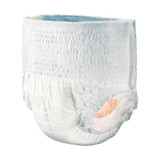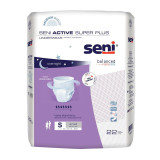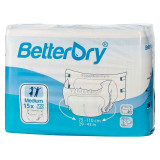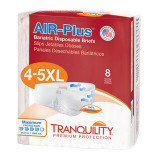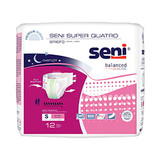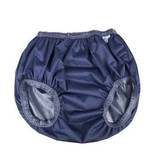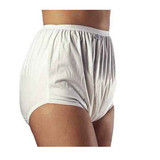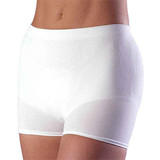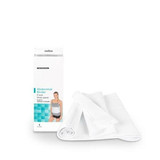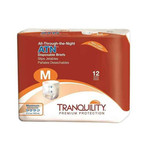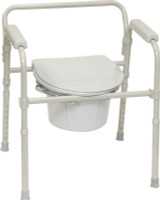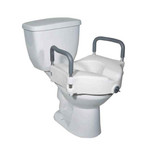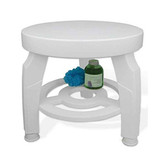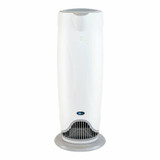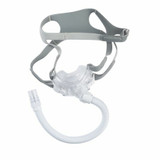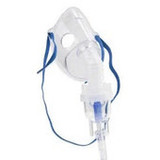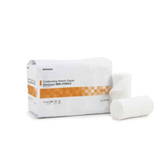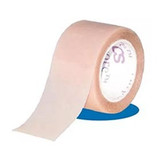
The Caregiver Guide - Natural Remedies for Incontinence
Incontinence is a pervasive issue affecting individuals as they age. The National Institute of Health has estimated that the number of people who suffer from Urinary Incontinence over the age of 65 will grow to a staggering 20.2% by 2050. With faith in Big Pharma dwindling and the option for solutions being limited, the need for holistic approaches and natural remedies has come to the forefront in the fight against the problem in recent years.
Sufferers have several options available to them. Now, these natural remedies are not cures, but they may improve the overall quality of life by providing some relief and ultimately helping to manage incontinence. A bonus is that these holistic solutions also carry several other benefits. Beyond the positive influence of these practices on incontinence, they can also improve other areas of life, such as stress reduction, hormonal imbalances, and even posture.
I. Yoga for Incontinence: A Holistic Approach to Pelvic Health
Yoga, an ancient practice with roots in the holistic traditions of India, seamlessly integrates physical postures, breath control, and meditation to create a comprehensive approach to well-being. This multifaceted discipline has become one of the most valuable natural remedies for incontinence, demonstrating its efficacy in addressing not only the physical aspects of the condition but also fostering mental and emotional balance.
By promoting pelvic floor strength, enhancing body awareness, and encouraging mindfulness, yoga provides individuals dealing with incontinence a holistic and empowering means of managing and improving their overall health.
Flexibility and Strengthening
Yoga's focus on enhancing pelvic floor muscles is pivotal in managing incontinence. Research published by the American Urogynecologic Society highlights that women who engaged in regular yoga practice experienced a significant improvement in pelvic floor muscle strength, resulting in a substantial reduction in the frequency of incontinence episodes.
Specific yoga poses, such as the pelvic tilt and bridge, target the muscles supporting urinary control, promoting strength and flexibility.
Stress Reduction
Stress significantly contributes to incontinence, and yoga's emphasis on mindfulness and relaxation techniques proves beneficial. A study in the International Journal of Preventive Medicine indicates that participants who incorporated yoga into their routine reported a notable decrease in stress levels, anxiety and depression.
Yoga offers a holistic approach to addressing stress, incorporating physical postures, breathwork, and meditation. This comprehensive practice extends its benefits to individuals managing incontinence, as integrating yoga's physical and mental components contributes to pelvic floor strength and overall well-being.
By engaging in intentional breath control and mindfulness practices, individuals dealing with incontinence may find relief from the physical symptoms and a profound sense of balance and resilience in the face of stressors.
Improved Posture
Enhancing posture is a fundamental element in promoting optimal bladder control and mitigating issues related to incontinence. Maintaining proper alignment contributes to the effective functioning of the pelvic floor muscles, which are very important to urinary control. Improved posture ensures that the pelvic organs are appropriately supported, reducing the strain on the bladder and associated structures.
This, in turn, minimizes the risk of involuntary urine leakage and enhances overall bladder health. Additionally, proper posture supports the alignment of the spine and surrounding muscles, fostering a balanced distribution of pressure in the pelvic region.
II. Acupuncture: Aligning Energy for Bladder Harmony
Deeply rooted in traditional Chinese medicine is the art of acupuncture. This practice involves strategically inserting thin needles into specific points on the body. Among the natural remedies, acupuncture is alternative treatment that has shown promise in addressing incontinence through various mechanisms:
Regulation of Bladder Function
Acupuncture has been associated with the regulation of bladder function. A meta-analysis done by the Basic Medical School of Chengdu University of Traditional Chinese Medicine reviewed several acupuncture studies. It concluded that acupuncture can be effective in improving bladder function, leading to reduced incontinence symptoms.
By targeting specific acupuncture points related to bladder meridians, this practice aims to restore balance and harmony to the urinary system.
Stimulation of Nerve Pathways
The placement of acupuncture needles stimulates nerve pathways associated with bladder control. Acupuncture activates specific nerve pathways, leading to improved communication between the brain and the urinary system.
This nerve stimulation may contribute to enhanced bladder control and a reduction in incontinence episodes, making acupuncture a compelling alternative for those seeking holistic solutions.
Hormonal Balance
In addition to its impact on nerve pathways, acupuncture may contribute to hormonal balance. This is particularly relevant for individuals experiencing incontinence due to hormonal changes, such as menopausal and andropausal individuals.
By addressing hormonal imbalances through acupuncture, practitioners aim to alleviate incontinence symptoms at their root, providing a holistic and integrative approach to urinary health.
III. Herbal Remedies: Nature's Solutions for Bladder Well-being
Herbal treatments, deeply rooted in traditional medicine, have been employed for centuries to address various health issues, including incontinence. Some of the most effective remedies include:
Saw Palmetto
Saw palmetto is one of the better-known natural remedies for addressing urinary symptoms, particularly in men with benign prostatic hyperplasia (BPH). This herb is believed to improve urinary function by reducing inflammation and promoting a healthier prostate.
Research suggests that saw palmetto may play a role in reducing the frequency of incontinence episodes in individuals dealing with prostate-related urinary issues.
Horsetail
Rich in silica, horsetail has been traditionally used to strengthen connective tissues throughout the body, including those in the urinary tract. By fortifying these tissues, horsetail may improve bladder function and reduce incontinence symptoms.
Studies exploring the potential benefits of horsetail in managing incontinence are limited, but traditional uses and anecdotal evidence suggest its potential as a complementary herbal remedy.
Cranberry
While commonly associated with urinary tract health, cranberry's benefits extend to incontinence management. Cranberries contain compounds that may prevent bacteria from adhering to the urinary tract walls, reducing the risk of urinary tract infections (UTIs) that can contribute to incontinence.
Incorporating cranberry supplements or juice into one's routine may offer additional support for bladder health, particularly for those prone to UTIs.
Final Thoughts
Yoga, acupuncture, and herbs and other natural remedies offer nuanced approaches that extend beyond symptom management, addressing the root causes of incontinence while promoting overall well-being.
These remedies, however, do not offer a cure, and at LL Medico, we understand how difficult it can be to help manage incontinence in the elderly. Allow us to use more than 25 years of experience and Autoship facility to lessen the burden by managing your supplies. We offer quality products and can supply everything from adult diapers to nutritional supplements and even over-the-counter medications. Call us at (855) 422-4556 or email [email protected].




